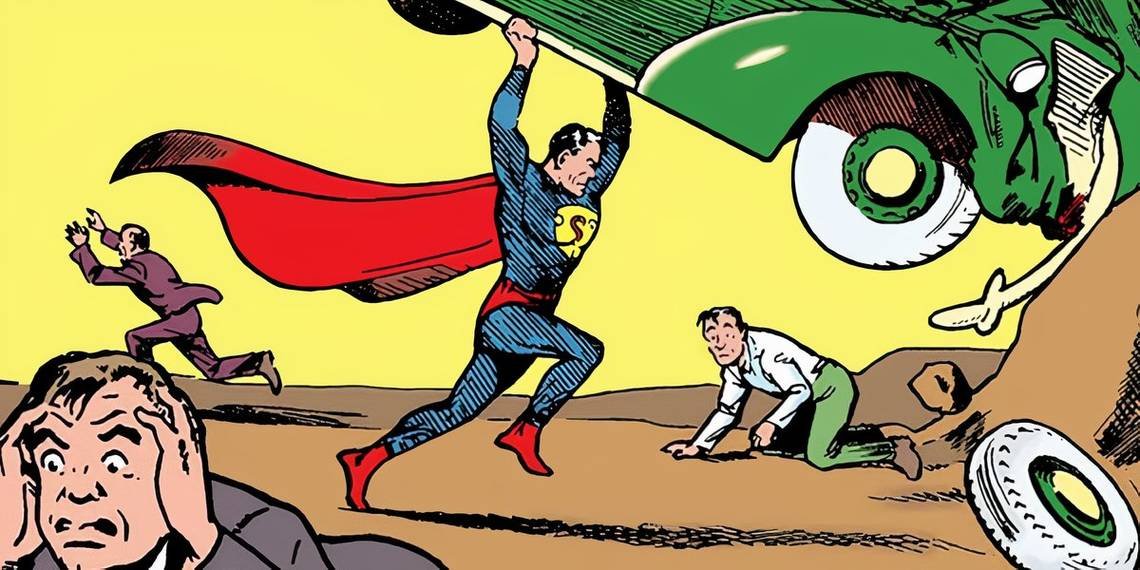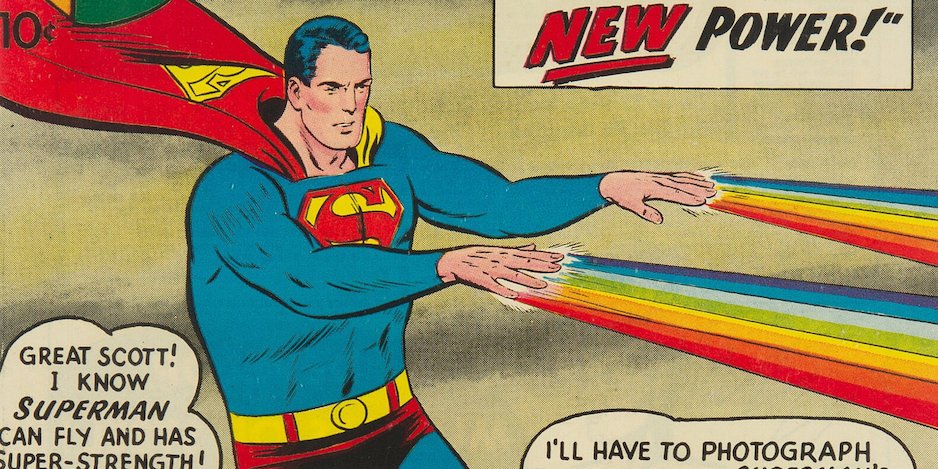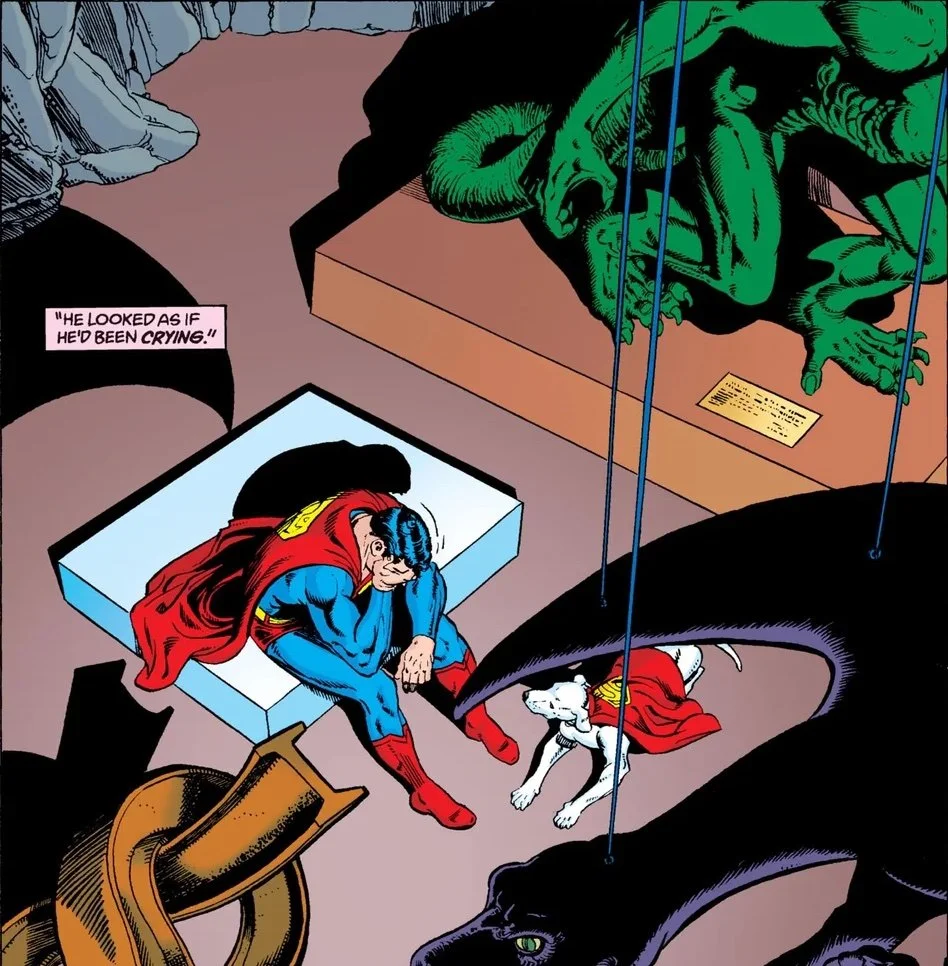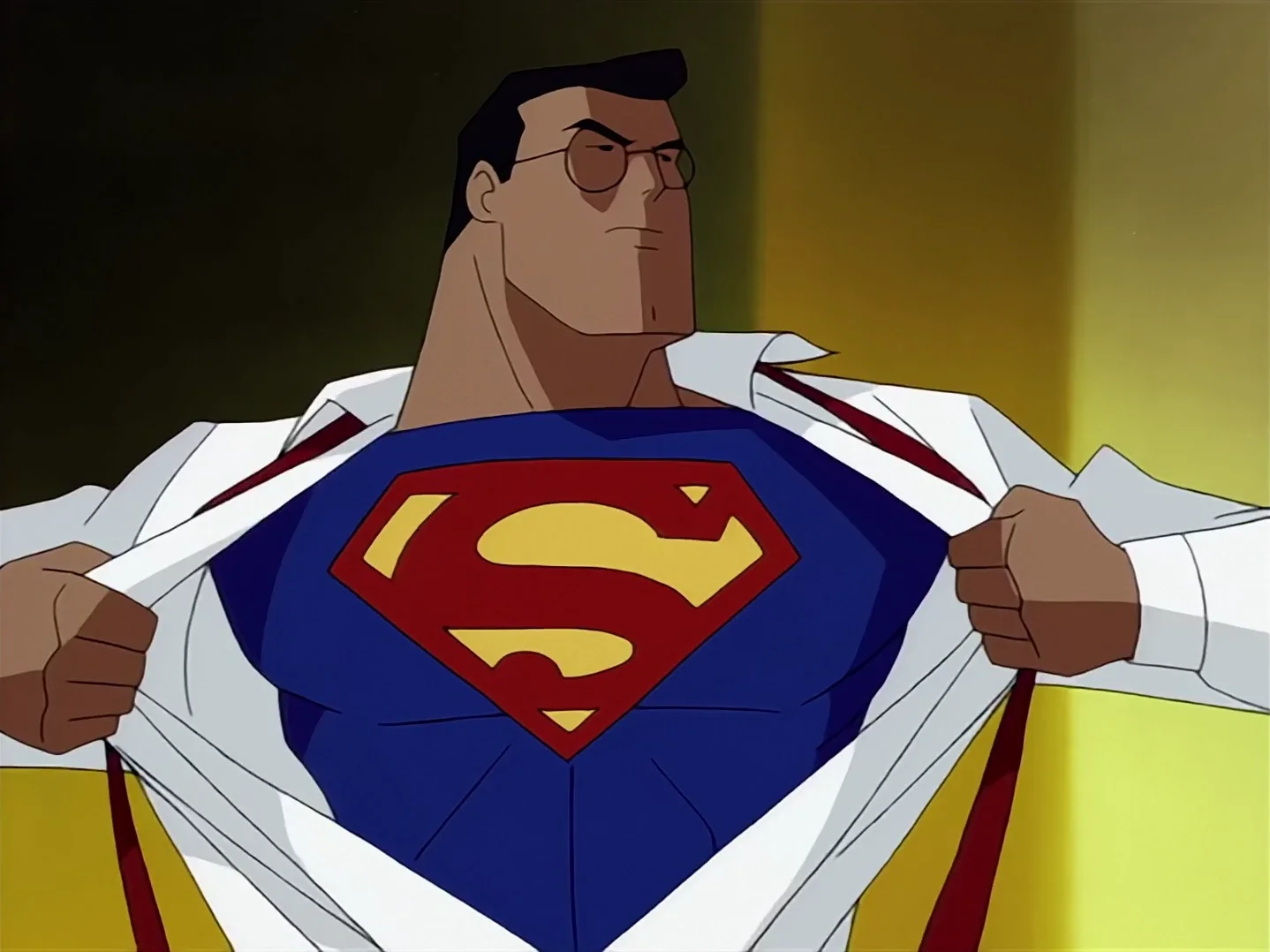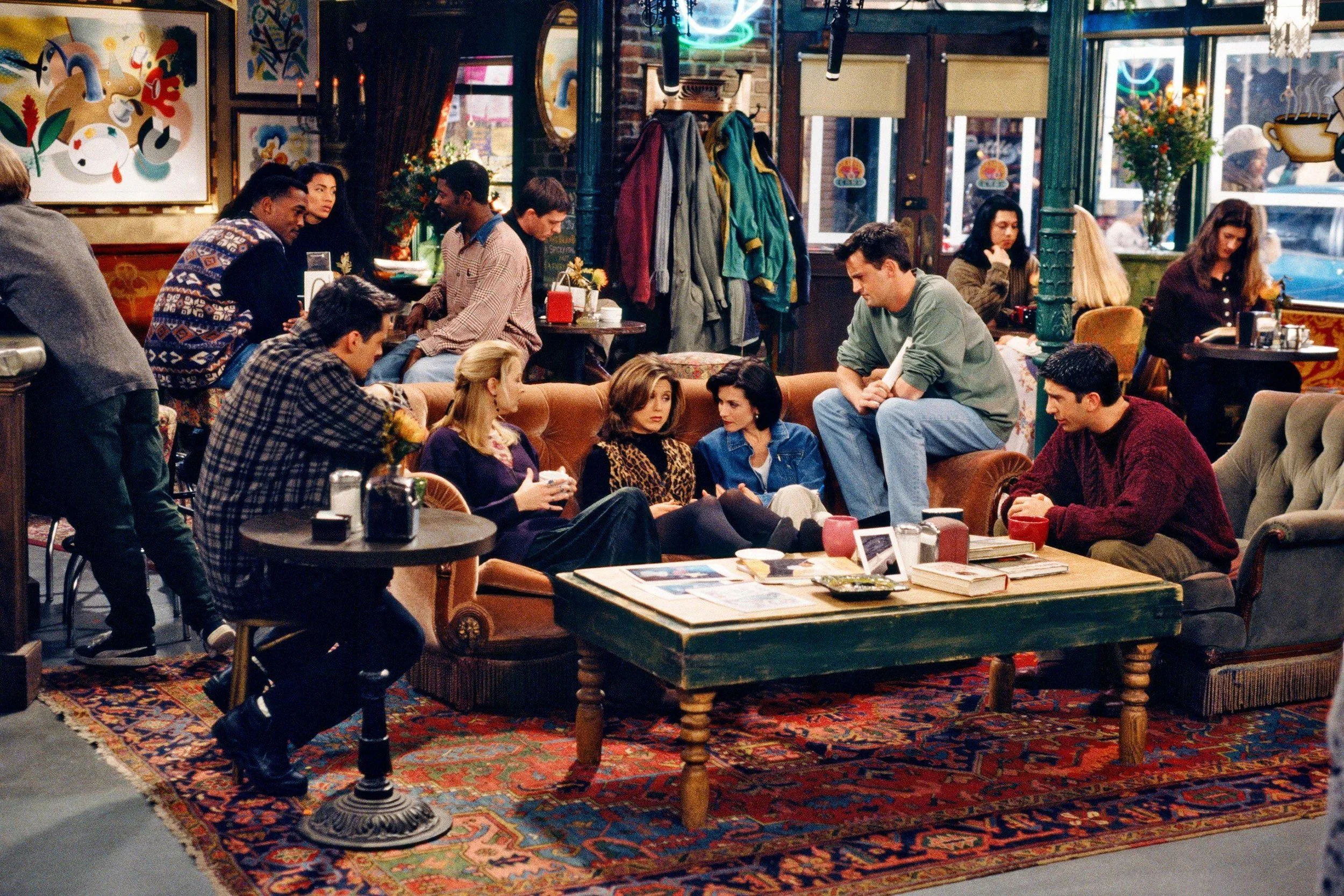Up, Up and Away! (Again): The Enduring Power of Superman
Up, Up and Away! (Again): The Enduring Power of Superman
Feature art by Jasmine C. Cabriles
There are few superheroes as universally loved as Superman. Ask anyone and they’ll have a memory of the first time they saw the Man of Steel. Whether it’s in a comic strip, a cartoon, or even on the side of a jeepney, everybody knows who Superman is. Growing up, I remember that if you asked kids who their favorite hero was there were three usual mainstays for Filipinos: Spiderman, Darna, and Superman—all beloved for their own reasons.
While I love Darna and Spiderman, it feels like Superman has existed around me my whole life. My first memories of him are of coming home from school and watching reruns of Superman: The Animated Series on Cartoon Network. I think a part of me has always held onto that version of Superman: powerful, but not invincible, funny, and compassionate to the needs of the people of Earth. That was my Superman.
David Corenswet as Superman and Krypto the Superdog in Superman | Still courtesy of Warner Bros. Pictures
The lead up to the release of Superman (2025) was something I hadn’t seen for a superhero film in a long time. I saw so many takes on Superman’s character based on everyone’s different experiences with him. It was wild and fascinating to watch discussions online when the first teaser was released. Moviegoing audiences have felt a heavy dose of superhero fatigue in recent years, and I’m no exception. Couple that with the rising prices of comics and the pressure to be fully immersed into the connected multiverse of the films and TV shows—it’s exhausting. But James Gunn and Peter Safran’s Superman promised a fresh start to the film version of the DC Universe. There have been 12 Superman live action films, give or take a couple because of whatever technicalities you want to apply. And it makes me wonder: What is it about the Man of Tomorrow that makes audiences return to him time and time again? To do that, I think one has to look at Superman from the Golden Age up until his New 52 era.
The Golden Age (1933-1955)
Let’s go back to the beginning. Superman is a character created by Jerry Siegel and Joe Shuster. An immigrant hero created by two Jewish immigrants with a love for adventure stories and comic books. However, his creation didn’t immediately start as the Superman we know today. It began as a short story, The Reign of the Superman, which was initially a villain story of a bald-headed man with telepathic powers trying to rule the world. But an idea tickled Siegel and Shuster’s minds: What if this character was a hero instead? And thus, Superman was born. Siegel began writing the script with Shuster illustrating. The two created a comic strip that was ultimately rejected by every newspaper publication. Superman did get his chance to debut on the printed page when the two men were working at National Allied Publishing, which would later be known as Detective Comics. With the success of Detective Comics, the publisher was looking to put out a new anthology: Action Comics. It was here that Superman got his start, with a full color cover, and was sold for a dime.
In the early days of the Golden Age, Superman was the champion of the oppressed. He was a crusader for social justice, and he tackled the fears of urban crime and war. In fact, his first issue saw him beat up a man abusing his wife. Superman became something for ordinary people to aspire to. The fact that he was also mild-mannered Clark Kent, a reporter from the Daily Star, helped people see the ways ordinary people could do good.
Golden Age Superman in Action Comics #1 | Still taken from Comic Book Resources
Superman was a hit for Detective Comics’ Action Comics Anthology and enough so that he got his own comic book, merchandise, and radio show all within the first five years of his appearance. In 1949, Superman got his first solo comic book, which sold more than a million copies. Of all of these, the Superman radio show was perhaps the most influential as it introduced key aspects of his lore, such as the renaming of the newspaper to the Daily Planet, editor in chief Perry White, Superman’s best pal Jimmy Olsen, and it was the very first time kryptonite appeared as Superman’s weakness.
Superman’s portrayal changed pre- and post-World War II. During the war, people thought his capers with masked villains were nothing compared to the actual events happening away from home; he was considered childish. It was during this time that Superman became part of American propaganda, encouraging people to buy war bonds and support American troops. Think the scenes in Captain America: The First Avenger where Steve is shown punching Nazis in every state. After the war, Superman became a representative of obeying the social order, rather than the social crusader he started out as. This was his “Big Blue Boy Scout” era, which focused on family life and his adventures with the supporting cast from the radio show like Jimmy. With the introduction of the Superboy storyline, his own backstory was retconned from only becoming a superhero in his adult life to having his own superpowered adventures in Smallville.
The Silver Age (1958-1970)
Silver Age Superman | Still taken from 13th Dimension
The Silver Age of Superman introduced more things that still endure in Superman’s mythos to this day. This was the age of Krypto, the Fortress of Solitude, and his cousin Supergirl also known as Kara Zor-El. It was the start of the expansion of Superman’s world, with comics focusing on Jimmy and his love interest, the intrepid reporter Lois Lane, as well as the arrival of iconic villains Braniac and Bizarro. Silver Age Superman was invincible, capable of doing physics-defying feats. Comics at this point were seen as forms of escape from the worries and mundane nature of everyday life, hence the increase in ridiculous and weird adventures for different comic book characters. Multiple colors of kryptonite having different effects on Superman including turning him gay? Yep. Superman turns into a lion? Yep. Lois Lane gets turned into a baby by Lana Lang? Yep. A true era of superhero weirdness and campiness.
The Bronze Age (1970-1985)
Bronze Age Superman in Whatever Happened to the Man of Tomorrow? | Still courtesy of DC Comics
In contrast to the joyful silliness of the Silver Age, the Bronze Age was a time when it became a struggle to make Superman relatable again. Comic sales were at an all time low. In some ways, the silliness of the Silver Age made the Man of Steel a punchline and joke to general audiences.
As a response, DC brought in new writers to update Superman. Clark Kent was now a TV news reporter, and they made him less invincible and put more focus on making his adventures more about Superman himself than encounters with different aliens. The Bronze Age was a time of reflection and messiness, both with DC’s scrambles to make the hero matter again, and within Superman himself. This was the birth of a Superman who struggles, and is conflicted but always trying to do good. It was in the Bronze Age that the first-ever superhero blockbuster Superman (1978) was released, catapulting Juilliard-trained actor Christopher Reeve into movie stardom and reigniting audiences’ interest in Superman. Against a budget of $55 million, the film grossed $300 million at the box office and spawned three sequels. To many, including myself, this was their first live-action Superman.
The Modern Age (1985-2011)
Clark Kent/Superman voiced by Tim Daly in Superman: The Animated Series | Still courtesy of Warner Bros. Television Animation
The Modern Age brought about even more overhauls to the character. Most of the people who had grown up loving Superman were now adults and were looking for more complexity from their heroes. Incredibly important to this era are the 1985 miniseries Crisis on Infinite Earths, which destroyed the alternate realities of the previous iterations and the 1986 limited series, The Man of Steel by writer and artist John Byrne. This Superman was born on earth through a birthing matrix, where Clark’s powers developed gradually rather than all at once. The secret identity was no longer touted to be Clark Kent, but Superman. Lex Luthor was no longer a mad scientist, but an evil billionaire.
This reflected the reality of many young people entering into the workforce and being disillusioned by the systems they were operating in. Gone are the outlandish aspects of Superman’s story, and in came the grungey, gritty realism—all in an effort to make Superman cool again. Most of my experiences with Superman both in on-screen media and with comics came from this era. I was born in 2001, right around the time reruns of Bruce Timm’s Superman, Batman, and Justice League shows were airing on Cartoon Network. I can still remember the different Justice League-themed birthday parties and kids’ meal toys I collected growing up. Superman and the Justice League were flawed yet heroic characters that I remember looking up to.
Superman: Birthright (2003), written by Mark Waid, with art by Lenil Yu and Gerry Alanguilan, is another important miniseries that retcons Byrne’s origin story, reintroduces some aspects of Superman’s mythos from pre-Crisis and adds in elements that come into play in Smallville.
The hit series Smallville is one of my favorite pieces of Superman media. With a killer theme song by Remy Zero and operating on a now infamous “no tights, no flights” rule, Smallville was the Warner Brothers’ attempt at a superhero teen show, which would later birth what is now known as the Arrowverse. In line with the characteristics of this era, the show focused on Clark Kent’s journey into becoming the man known as Superman rather than his adventures as the superhero. It was much more grounded, focusing on everyday life with superpowers and other meteor-infested people. It’s so extremely 2000s, down to the needle drops and insistence on leather jackets as superhero costumes. Despite all that, I love it for its excellent exploration of Clark and the people around him as people, particularly Lex and Lois. They have their hearts broken, they make mistakes, and they grow. For all its clunky CGI, I think it’s a show that still holds up.
Tom Welling as Clark Kent in Smallville | Still courtesy of Warner Bros. Television
The New 52 Era (2011-2016)
The last Superman era I want to touch on is the New 52 and its connection to 2013’s Man of Steel. The New 52 was marked by writers and artists wanting to subvert Superman. New 52 Superman was a lonelier one, with both his parents being dead, and Clark not being with Lois. This Superman is much more aggressive and brooding. I don’t really revisit this era a lot, as broody Superman and the overall bleakness of the era is not my cup of tea. But many people were drawn to this Superman post-Nolan’s The Dark Knight and the release of Injustice in both comic and video game form. Audiences wanted grounded, gritty superheroes that reflected ever-changing and tumultuous times.
Henry Cavill as Superman in Man of Steel | Still courtesy of Warner Bros. Pictures
Zack Snyder’s Man of Steel (2013) was the first movie in the DC Extended Cinematic Universe and was ultimately met with mixed reviews. Some people love Henry Cavill’s portrayal of a stoic, god-like Superman, who seems invincible and untouchable, while others critiqued his killing of the movie’s main villain and fellow Kryptonian General Zod, along with his coldness, and disregard for saving lives.
So where does that leave Superman in 2025? In trying to answer this question, I read even more comic books than I already had, watched a great 2006 documentary (that unfortunately features Kevin Spacey and Bryan Singer), took to YouTube to discover other perspectives, and did my due research. Superman is a character who’s existed for a long time and everyone has their own opinion on him and what he means to them.
Like I said, Gunn’s Superman has sparked a lot of chatter online from two camps: people who dislike it because they prefer edgy, realistic Superman, and people who are excited for the return of superhero whimsy and Silver Age-esque shenanigans. There’s also excitement for DC’s new Absolute Universe line and its potential for the comics’ roster of heroes. But ultimately I think the reason Superman has taken flight time and time again is because he has always been a reflection of what we, as a society, are searching for in both a role model and in ourselves. He is a reminder of the person we could be, despite the circumstances and situations we find ourselves in.
One of my favorite quotes on the topic of superheroes comes from Grant Morrison, one of the most beloved Superman writers of all time, who writes in their book: “We love our superheroes because they refuse to give up on us. We can analyze them out of existence, kill them, ban them, mock them, and still they return, patiently reminding us of who we are and what we wish we could be.”
In 2025, when the world is constantly bombarded with crises, there seems to be a need for more hope and compassion. Having seen the film—and while I wouldn't say he does it perfectly—that’s what this Superman brings. When it’s so easy for us to become apathetic to everything, he is hopeful and compassionate. Here is a Superman that believes that his humanity is his greatest strength. Like all the Supermen that came before, our present Superman reminds us that while we as people may not be able to fly, we have just as much ability to do good as the Man of Steel himself.





